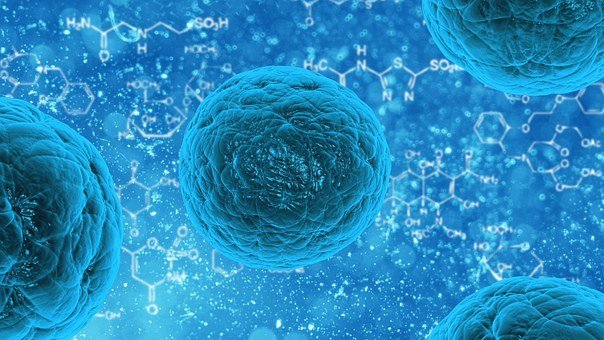
Few doctors, and even fewer patients, have heard of CHIP.
But it is emerging as a major cause of heart attacks and stroke, as deadly as high blood pressure or cholesterol.
By GINA KOLATAJAN. 29, 2018 New York Times
It’s been one of the vexing questions in medicine: Why is it that most people who have heart attacks or strokes have few or no conventional risk factors?
These are patients with normal levels of cholesterol and blood pressure, no history of smoking or diabetes, and no family history of cardiovascular disease. Why aren’t they spared?
To some researchers, this hidden risk is the dark matter of cardiology: an invisible but omnipresent force that lands tens of thousands of patients in the hospital each year. But now scientists may have gotten a glimpse of part of it.
They have learned that a bizarre accumulation of mutated stem cells in bone marrow increases a person’s risk of dying within a decade, usually from a heart attack or stroke, by 40 or 50 percent. They named the condition with medical jargon: clonal hematopoiesis of indeterminate potential.
CHIP has emerged as a risk for heart attack and stroke that is as powerful as high LDL or high blood pressure but it acts independently of them. And CHIP is not uncommon.
The condition becomes more likely with age. Up to 20 percent of people in their 60s have it, and perhaps 50 percent of those in their 80s.
“It is beginning to appear that there are only two types of people in the world: those that exhibit clonal hematopoiesis and those that are going to develop clonal hematopoiesis,” said Kenneth Walsh, who directs the hematovascular biology center at the University of Virginia School of Medicine.
The growing evidence has taken heart researchers aback. Dr. Peter Libby, a cardiologist at Brigham and Women’s Hospital and professor of medicine at Harvard Medical School, calls CHIP the most important discovery in cardiology since statins.
“I’m turning part of my lab to work on this full time,” Dr. Libby said. “It’s really exciting.”
The mutations are acquired, not inherited — most likely by bad luck or exposure to toxins like cigarette smoke. But there is little that patients can do.
Brian Gear, a project manager at a Boston company that analyzes health care data, was given genetic testing by doctors at Dana-Farber Cancer Institute because his mother had had a blood cancer that can be inherited.
The diagnosis was CHIP, something he had never heard of. And because it dramatically increased his risk of heart disease, it was life-changing.
“It is almost like a Ph.D. in letting go of control,” said Mr. Gear, who said he was in his mid-30s. “As much as you want to have a plan and a destiny, you also have this thing. It’s scary and it’s terrifying.”
“I don’t want to use the word time-bomb, but that’s how it feels,” he added.
CHIP was discovered independently by several groups of researchers who were not even investigating heart disease. Mostly, they were looking at the genes of patients who might develop leukemia or, in one research project, schizophrenia.
The scientists searched databases from genetic studies involving tens of thousands of people whose DNA had been obtained from their white blood cells.
To their great surprise, the teams converged on the same phenomenon. Unexpectedly large numbers of study participants had blood cells with mutations linked to leukemia — but they did not have the cancer. Instead, they had just one or two of the cluster of mutations.
“This clearly wasn’t happening by chance,” said Steven McCarroll, a geneticist at the Broad Institute and Harvard Medical School. “We knew we were onto something, but what were we onto?”
The investigators quickly guessed the broad outlines.
White blood cells, the attack dogs of the immune system, arise from stem cells in the bone marrow. Every day, a few hundred such stem cells spew out blood cells that begin dividing rapidly into the 10 billion needed to replace those that have died.
Sometimes, by chance, one of those marrow stem cells acquires a mutation, and the white blood cells it produces carry the same mutation.
“Some mutations are just markers of past events without any lasting consequence,” said Dr. David Steensma, a blood cancer specialist at Harvard Medical School and Dana-Farber Cancer Institute.
But others, especially those linked to leukemia, seem to give stem cells a new ability to accumulate in the marrow. The result is a sort of survival of the fittest, or fastest growing, stem cells in the marrow.
“Some mutations may alter the growth properties of the stem cell,” said Dr. Steensma. “Some may just make the stem cell better at surviving in certain less hospitable parts of the bone marrow where other stem cells can’t thrive.”
Perhaps the most extreme example of how this can play out was reported in 2014, when researchers described a 115-year-old woman. Nearly her entire supply of white blood cells was generated by mutated stem cells in her bone marrow.
At the first she had developed just two mutated stem cells. But over time their progeny came to dominate her bone marrow. She lived about as long as a human can, nonetheless, and died of a tumor.
posted by Lauren O. Thyme, author of ALTERNATIVES FOR EVERYONE, A Guide to Non-Traditional Health Care
Hi! I am a robot. I just upvoted you! I found similar content that readers might be interested in:
https://www.nytimes.com/2018/01/29/health/heart-disease-mutations-stem-cells.html